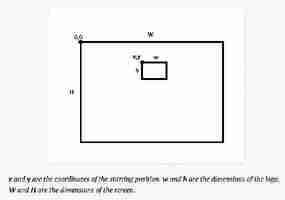How to stay in business during coronavirus: Lessons from running a remote-first company
We’re facing a challenging time for our world. Having passed 413,467 cases in 196+ countries and territories at the time of writing, the coronavirus outbreak has gone global.

This coronavirus disease (COVID-19), caused by the virus SARS-CoV-2, spreads through droplet transmission, such as coughing or sneezing.
It may also be possible for employees to pick up the virus from touching contaminated surfaces.
Traditional offices bring employees together physically — making it easier to get and spread the virus. To stay operational, companies around the world are strongly encouraging their workforces to work remotely from home.
It’s being called “the world’s largest work-from-home experiment.”
From small startup teams and SMEs to global workforces at multinationals, the work-from-home movement is getting quite popular. Companies such as IBM, Twitter, Google, and Microsoft have asked many of their employees to work remotely. Apple has done the same, while also shutting down its retail stores indefinitely .
Prior to COVID-19, less than 5 million people worked remotely in the US full-time, accounting for 3% of the workforce. Flexible and remote work used to be a niche trend for digital nomads and ‘solopreneurs.’
It was thought of, hypothetically, as the future of work , not the present. It was desired by Gen Z and millennials, with more than two-thirds of college and university students and graduates expressing that they want jobs with remote work options.
With COVID-19, working from home is not just the norm, but a necessity. Thousands of businesses are trying to figure out how they can survive and stay in business thanks to the virtual world.
We built Goodwall with a distributed team, with 50+ team members working across 4 time zones from New York to Geneva to Novi Sad, Tel Aviv, and Manilla.
Here are some tips, tools, and best practices that have helped us, and hopefully they can help you too.
Create a virtual office
Communication is key. To keep your team on the same page, you need to be in the same room, virtually. Our distributed team uses Slack to stay motivated and productive, wherever we are.
We have a #general chat for team announcements and to get important information to everyone at once.
We celebrate product releases and milestones, welcome new members, and, of course, wish each other happy birthday. W e use 200+ dedicated channels for each department or project to keep our work flowing. Finally, there’s direct chat between team members that basically replaces internal emails.
Over the last four years, we’ve sent 1,919,129 messages and shared 54,831 files.
Host video meetings
Beyond messaging each other on Slack, I find it is valuable to host a handful of regular virtual face-to-face team meetings with voice and video.
More than ever before, considering we spend our days social-distancing in isolation, I think this is key today.
For example, every two weeks, on Friday at midday, we host an all-hands meeting for our entire company to share business updates, get feedback, go over our progress, analyze our performance, celebrate milestones, and give everyone a chance to be heard and ask questions.
Screen-sharing is particularly useful when reviewing metrics and designs. Despite not being in the same room, we’re able to drive transparency and alignment on our company’s mission and vision.
Another, more frequent example, is that every morning, in line with agile methodology, our engineering and product teams do 10 minute scrum virtual stand-up meetings to sync on progress, identify problems and answer questions.
To run these virtual meetings, we use Google Hangouts for our daily and one-on-one meetings and Zoom for our all-hands meeting to have 50+ team members live at the same time.
On top of that, screen sharing makes it easy for everyone to see metrics, designs, etc. to help them visualize what they’re hearing.
I should mention that in order to be effective, remote meetings require proper homework and planning in advance; for example, creating and sending an agenda ahead of time is key. Pro tip: Kick off the meeting with 1-2 minutes of ice-breaking water-cooler chat to build productive relationships.
Note: Sundar Pichai, the CEO of Google, announced that they are supporting the COVID-19 relief effort by rolling out free access to their advanced premium Hangouts Meet video-conferencing capabilities through July 1, 2020.
Project management and collaboration
Take your workflows online. Our project management and collaboration tools tend to be department specific.
Our business development team uses Salesforce and our ma rketing and design teams swear by Asana, a task management platform.
Our Engineering teams use Jira to efficiently plan new releases, track bugs and more, while our Product team uses its sister app, Confluence, to define user stories and product requirement documents.
Finally, our entire company uses Google Docs and stores everything on the cloud with Google Drive to access and share our files everywhere.
Create a virtual support channel
Coronavirus is also taking a toll on our mental health . Support channels, whether on Slack, an intranet system, or elsewhere, help employees feel safe and allow them to receive critical and timely information updates.
I hope these few tips and suggestions will be helpful during these challenging times, and perhaps you will embrace remote work beyond COVID-19.
As they say in our hometown, Geneva, Switzerland, “Post Tenebras Lux”: “After darkness, there is light.”
11 quick and simple productivity tips for entrepreneurs
Who’s not busy? If you are like most people, we wake up to crammed calendars and a million things. As a lawyer/father/husband/writer, I am sharing my top 11 productivity tips that help get things done.

Now you might’ve seen some of these before, but trust me, you need the reminder. It’s alarmingly easy to postpone improving your productivity, so read these tips and put at least one of them into action today!
First, write it down
Every task and commitment should be written down, getting every engagement out of your head and into a trusted system.
You can use a fancy app (think Evernote, Asana, or your Microsoft Outlook) to capture these commitments, but you can start with a simple pen and paper.
The most dreaded task
Each of us has one or more tasks on our to-do list that we dread doing. It may be an unpleasant phone call you don’t want to make or that memo you’ve been putting off writing.
Whatever it is, it keeps getting pushed, and then your week gets overwhelming. End that cycle. Do it first thing instead of doing the easy ones. Do the tough tasks first.
Silence distractions
Distractions such as emails and phone calls, are one of the primary productivity killers. While technology should make our lives easier, it can also make it virtually impossible to maintain the kind of focused attention necessary to work efficiently.
So you need to control that technology. When you’ve got a critical task, turn off the ringer on your iPhone, silence your email alerts, and close your office door for that hour or 30 minutes. The world won’t end, and you’ll finish your task faster.
Take breaks
No matter how busy you are, after a certain amount of time, fatigue will begin to impair your effectiveness. Periodic breaks, even during the most hectic days, can help a lot.
A simple stretch , walk around the block will help you be both mentally and physically which in turn leads to more productivity.
Delegate
Many people hate to ask for help. It often seems more trouble to explain a task to someone else than just to do it. But not everything must be done by you.
Evaluate your to-do list carefully. What jobs could someone else do, thereby freeing you up to focus on the things? Doing only the things you can and allowing somebody else to contribute by doing those other tasks.
Say “no”
“No” is a complete sentence. No explanation is necessary. Practice saying it. Saying “no” helps me stay productive and focused on what matters.
Nourish your mind
I try to start my day with guided meditation, gratitude, and forgiveness practices. I use apps like Omvana on my phone. I embrace technology-based solutions, and I love finding new “hacks” to enable growth.
Amplifying positive thoughts, expressing thanks, counting blessings, and removing negative charges through forgiveness, helps me stay focused on the present.
Nourish your body
On weekends, I make superfood green veggie smoothies with my daughter to ensure healthy nutrition when starting each day. My favorite ingredients are spinach, leafy green and rainbow chard, avocado, celery, and a pinch of ginger. I try and eat fresh foods, with plenty of vegetables, avoid sugar, processed foods, and minimize alcohol — a challenge for wine lovers.
While I consume copious amounts of espresso coffee throughout the morning, I try and balance the caffeine with at least a liter of water per day to stay hydrated.
Make time for what’s important
It’s full speed ahead with getting the kids to school and into the office. Remote work is here to stay and will be an increasing trend with the need for social distancing. Still, I value face-to-face communication with teammates with clients, and sets meetings with clients and team members where possible between 9 am to 11 am and 2 pm to 5 pm.
I prioritize going out of the office several times a week to attend events, host meals, and visit with those in my network that I admire. It’s essential to be seen by clients, and they appreciate my emphasis on communication, ensuring that they stay abreast of the issues that matter. In the pandemic, that is translated into socially distanced walks and video and group calls.
Get some rest
Getting to bed at a regular time and consistently affording yourself a full night’s sleep is not always easy, but consciously striving for the very same is a vital part of the balancing act.
Be thankful
When confronted with negative thoughts and anxieties, thanking the universe for the many opportunities afforded and blessings received helps. This commitment to gratitude helps overcome the inevitable challenges that will be encountered.
Life is short. Success is leased and feels that rent is due every day. Staying present is the key to being productive.
Want to up your entrepreneurial game? Then join our online event, TNW2020 , where you’ll hear how the most successful founders kickstarted and grew their companies.
We need to make remote meetings more boring in 2021
It’s been a tough year of pivoting, remote work, and conceptualizing the ‘new normal.’ But as we enter a new year, it’s time to take stock of how we’ve operated professionally and what we’ll take with us into 2021.

So when exactly was the last time life was good? Was it when you were huddled up with your coworkers by the watercooler or spending time with your loved ones? No, it was when you were watching The Office — and therein lies our solution for next year.
With new vaccines on the horizon, things are looking brighter and we’ll probably be able to return to many of our pre-corona traditions. But despite that, the entrepreneurial and business communities seem obsessed with the idea that the ‘new normal’ is here to stay.
But my problem with the ‘new normal’ is that it sounds too perfect. Companies and startups are meant to open up to remote work completely, perfecting asynchronous work, and guaranteeing increased productivity with the flexibility to work during your personal ‘peak performance‘ hours.
All of this is missing an essential part of what makes a baseline, a sustainable ‘normal’: boredom.
We’re far from being perfect beings, so I believe we’ll always need to work in some imperfections into our operations. Now how do we achieve that? By taking a page out of The Office playbook.
So here’s my *fuego* take on how to make the ‘new normal’ work: make remote meetings even more boring .
Divisive and brave, I know. Not sure ‘hero’ is the right word to describe me, but I understand it comes to mind when you read this.
Before I drop some knowledge on you, just let me be clear: I’m not saying that endless Zoom calls aren’t frustrating and awful, it’s just that they don’t reach peak boringness , where its beauty is released. They’re just half-assed boringness.
It’s all too easy to just turn off your camera, surf the web, check messages and tweets, and pretty much carry on with the mindless internet habits that you use to fill every other void in your life.
What’s wrong with that? Well, I’ll tell you, we can veer off into deep existential dread because we’re overly-stimulated, instead of embracing the meeting’s banality. This isn’t just me saying it, it’s science (probably).
The Office taught us that in-person meetings, however, prevent you from diverting straight into existential dread, because you’re too occupied having the life sucked out of you in a stuffy meeting room. The camaraderie between you and your coworkers when you see the light in each other’s eyes slowly extinguish in unison is the principle the modern world was built on…
And here’s how you can capture that feeling: BEHOLD, THE BOUNCING DVD LOGO SITE !
Just like when The Office gang obsessed over whether a DVD icon could hit the corner of the screen , you can do the same in your next Zoom call with this neat little site .
As nerdy mathematicians have shown, the logo can actually hit a corner on DVD players. But what’s tricky about the site is that you can adjust the size of the window yourself and the logo will change its bouncing accordingly — adding a whole new exciting layer to your boredom.


Now while most business leaders have tried to find new ways to make remote meetings more engaging — like always starting off with a collaborative video game — I’d like to argue my call for boringness also addresses engagement. You can’t be bored if you’re not fully engaged with how tedious something is, as any distraction would alleviate your boredom. Checkmate .
Having the hypnotizing DVD logo on next to the slides in a monotonous Zoom meeting hits the sweet spot of engagement and utter boredom. It gives you a certain sense of progression, while not taking away too much of your attention.
I already tried the DVD logo out with a couple of my colleagues, and they claimed it had actually gone into the corner TWICE! Not saying they’re liars, but I somehow missed it both times.
So if you’ll excuse me, I need to get back to monitoring my beautiful bouncing DVD logo. Let me know how your boring meetings go in 2021.
The original version of this article appeared in our newsletter, Big Spam. Sign up here!